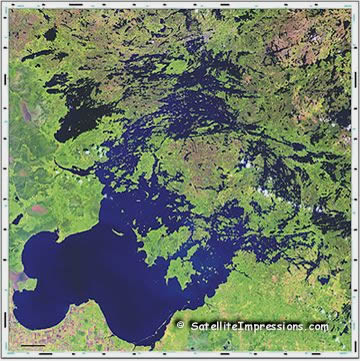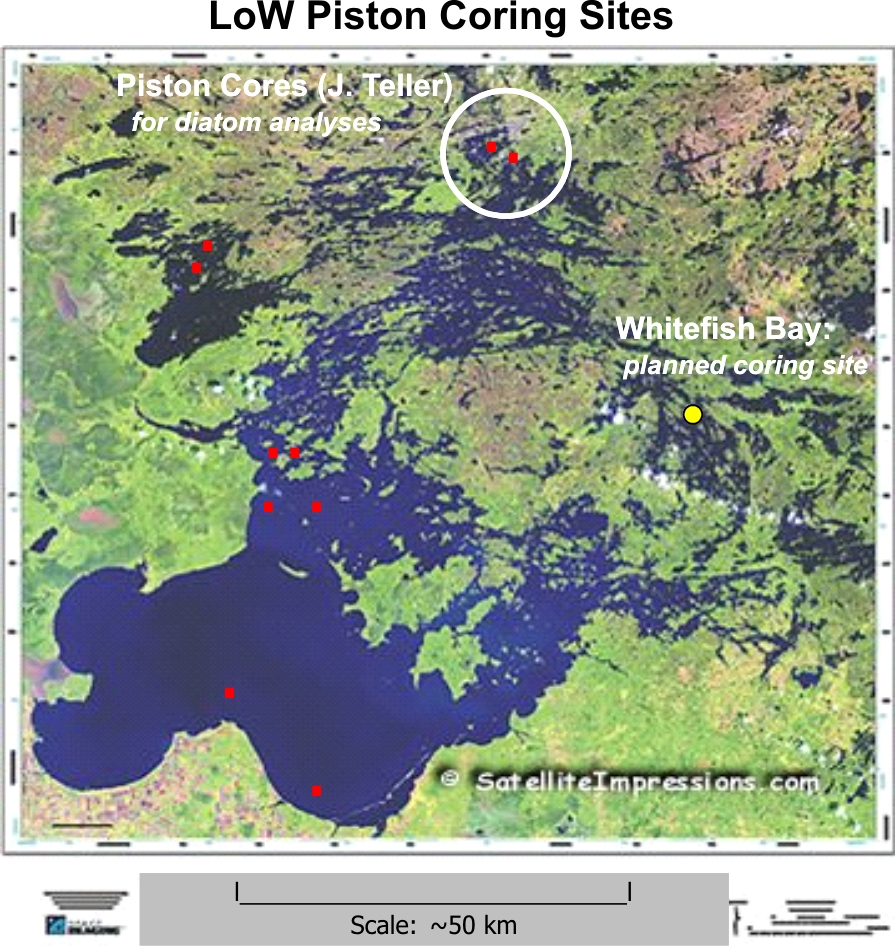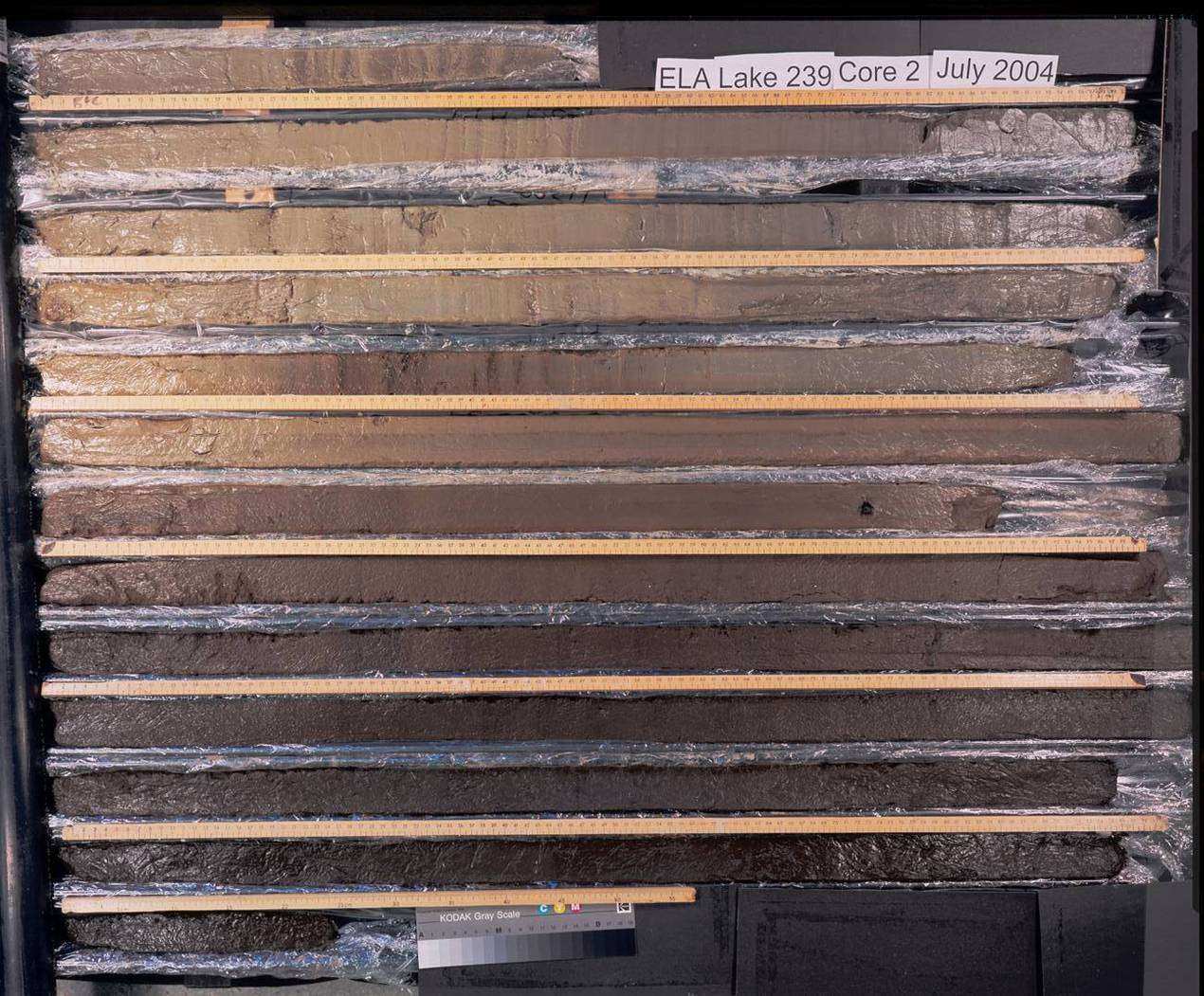
| |
| HOME |
| PEOPLE |
| RESEARCH |
| PRESENTATIONS |
| NEWS & LINKS |
| P.E.A.R.L. |
| Long-term environmental changes in the LoW over the Holocene |
||
Lake of the Woods Satellite image showingcoring sites
An example of long core sediments. Photo courtesy of Melissa Moos |
||
Water management decisions have become more complicated over recent decades, due to the confounding effects of multiple stressors and the overarching effects of recent climatic change. Data on long-term water quality changes in the Lake of the Woods (LoW), an important water body with multiple and diverse users, are necessary to place the present (and future) environmental state of this important and complex freshwater system into a larger temporal context and to establish baseline conditions (for any future mitigation). For example, are there any points in time during the Holocene when climatic conditions could serve as a partial analogue for the sharp rise in temperature this region is currently experiencing and its recent impacts on limnological properties and aquatic biota? How might variations in Holocene climate (e.g. temperature, precipitation, drought, changes in ice cover duration etc.) and lake development (e.g. post-glacial isostatic rebound, organic sedimentation, etc.) have affected lake water properties (e.g. mixing properties, thermal stability, light properties, depth, etc.)? Is the magnitude of climatically-driven changes reported over the last few decades in the LoW exceptional from a millennial-scale perspective, or just part of natural variability? To address these questions, long-term changes in diatom assemblages and other biological indicators from different trophic levels (ostracodes, cladocerans, chironomids) will be examined from dated sedimentary sequences retrieved from a series of piston cores from various locations in the LoW. Although the effects of differential isostatic rebound in the LoW are reported to have resulted in substantial changes in lake level throughout the Holocene (i.e. last ca. 10,000 years), an assessment of long-term climate change impacts on lake water properties have yet to be undertaken in the LoW. However, our preliminary paleolimnological work on this lake, has revealed striking relationships between recorded climate and ice-out records over the last ca. 100 years from sites in the northern part of the LoW. These data provided clear evidence that sharp increases in temperature since ca. the mid-1970s, as well as a lengthening of the ice-free period by almost a month over the last 40 years, likely triggered a marked reorganization of lake algal community composition. Based on the foundation of our preliminary paleolimnological study, the logical extension of this research would be to examine these environmental and climatic changes on longer time frames and in different parts of this spatially heterogeneous lake. |
||

